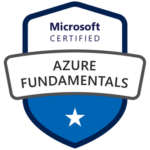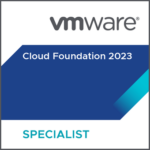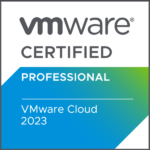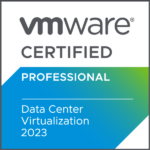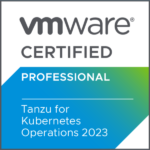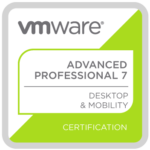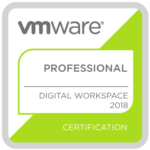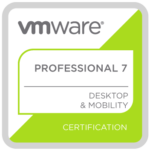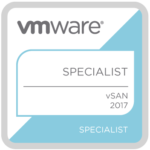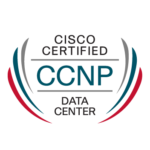The concept of “sovereign cloud” has been making waves across Europe and beyond. Politicians talk about it. Regulators push for it. Enterprises (re-)evaluate it. On the surface, it sounds like a logical evolution: regain control, keep data within national borders, reduce exposure to foreign jurisdictions, and while you are at it, maybe finally break free from the gravitational pull of the U.S. hyperscalers.
After all, hyperscaler dependency is seen as the big bad wolf. If your workloads live in AWS, Azure, Google Cloud or Oracle Cloud Infrastructure, you are automatically exposed to price increases, data sovereignty concerns, U.S. legal reach (hello, CLOUD Act), and a sense of vendor lock-in that seems harder to escape with every commit to infrastructure-as-code.
So, the solution appears simple: go local, go sovereign, go safe.
But if only it were that easy.
The truth is: sovereignty isn’t something you can just buy off the shelf. It’s not a matter of switching cloud logos or picking the provider that wraps their marketing in your national flag. Because even within your own datacenter, even with platforms that have long been considered “sovereign” and independent, the same risks apply.
The best example? VMware.
What happened in the VMware ecosystem over the past year should be a wake-up call for anyone who thinks sovereignty equals control. Because, as we have now seen, control can vanish. Fast. Very fast.
VMware’s Rapid Fall from Grace
Take VMware. For years, it was the go-to platform for building secure, sovereign private clouds. Whether in your own datacenter or hosted by a trusted service provider in your region, VMware felt like the safe, stable choice. No vendor lock-in (allegedly), no forced cloud-native rearchitecture, and full control over your workloads. Rainbows, unicorns, and that warm fuzzy feeling of sovereignty.
Then came the Broadcom acquisition, and with it, a cold splash of reality.
Practically overnight, prices shot up. In some cases, more than doubled. Features were suddenly stripped out or repackaged into higher-priced bundles. Longstanding partner agreements were shaken, if not broken. Products disappeared or were drastically repositioned. Customers and partners were caught off guard. Not just by the changes, but by how quickly they hit.
And just like that, a platform once seen as a cornerstone of sovereign IT became a textbook example of how fragile that sovereignty really is.
Sovereignty Alone Doesn’t Save You
The VMware story exposes a hard truth: so-called “sovereign” infrastructure isn’t immune to disruption. Many assume risk only lives in the public cloud under the branding of AWS, Azure, or Oracle Cloud. But in reality, the triggers for a “cloud exit” or forced platform shift can be found anywhere. Also on-premises!
A sudden licensing change. An unexpected acquisition. A new product strategy that leaves your current setup stranded. None of these things care whether your workloads are in a public cloud region or a private rack in your basement. Dependency is dependency, and it doesn’t always come with a hyperscaler logo.
It’s Not About Picking the Right Vendor. It’s About Being Ready for the Wrong One.
That’s why sovereignty, in the real world, isn’t something you just buy. It’s something you design for.
Note: Some hyperscalers now offer “sovereign by design” solutions but even these require deeper architectural thinking.
Sure, a Greenfield build on a sovereign cloud stack sounds great. Fresh start, full control, compliance checkboxes all ticked. But the reality for most organizations is very different. They have already invested years into specific platforms, tools, and partnerships. There are skill gaps, legacy systems, ongoing projects, and plenty of inertia. Ripping it all out for the sake of “clean” sovereignty just isn’t feasible.
That’s what makes architecture, flexibility, and diversification so critical. A truly resilient IT strategy isn’t just about where your data lives or which vendor’s sticker is on the server. It’s about being ready (structurally, operationally, and contractually) for things to change.
Because they will change.
Open Source ≠ Sovereign by Default
Spoiler: Open source won’t save you either
Let’s address another popular idea in the sovereignty debate. The belief that open source is the magic solution. The holy grail. The thinking goes: “If it’s open, it’s sovereign”. You have the source code, you can run it anywhere, tweak it however you like, and you are free from vendor lock-in. Yeah, right.
Sounds great. But in practice? It’s not that simple.
Yes, open source can enable sovereignty, but it doesn’t guarantee it. Just because something is open doesn’t mean it’s free of risk. Most open-source projects rely on a global contributor base, and many are still controlled, governed, or heavily influenced by large commercial vendors – often headquartered in the same jurisdictions we are supposedly trying to avoid. Yes, that’s good and bad at the same time, isn’t it?
And let’s be honest: having the source code doesn’t mean you suddenly have a DevOps army to maintain it, secure it, patch it, integrate it, scale it, monitor it, and support it 24/7. In most cases, you will need commercial support, managed services, or skilled specialists. And with that, new dependencies emerge.
So what have you really achieved? Did you eliminate risk or just shift it?
Open source is a fantastic ingredient in a sovereign architecture – in any cloud architecture. But it’s not a silver bullet.
Behind the Curtain – Complexity, Not Simplicity
From the outside, especially for non-IT people, the sovereign cloud debate can look like a clear binary: US hyperscaler = risky, local provider = safe. But behind the curtain, it’s much more nuanced. You are dealing with a web of relationships, existing contracts, integrated platforms, and real-world limitations.
The Broadcom-VMware shake-up was a loud and very public reminder that disruption can come from any direction. Even the platforms we thought were untouchable can suddenly become liabilities.
So the question isn’t: “How do we go sovereign?”
It’s: “How do we stay in control, no matter what happens?”
That’s the real sovereignty.



















